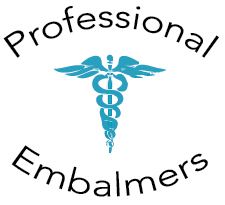Case Analysis: Difficult, Tissue Gas, Localized, Head & Face
Head & Face
Concentration no less than 3.0%
Remember – Tissue Gas caused by Clostridium perfringens is the fastest “known” generation-duplicating organism in the universe and require immediate treatment.
NOTE:
These cases can be quite difficult and can create wreak havoc to the embalmer, if not properly equipped. Proper chemical choice is vital to the destruction of the bacteria. If proper steps are not taken a body can decompose to the point of unrecognizable within a matter of a few hours. Time is of the essence.
Dilution – approx. 11.5 -12 oz. per gallon solution (Using a 33 index) Use Dilution Calculator for all other index’s
Directions –
- Pour 11-12 oz of 33-index arterial into embalming machine tank, I prefer Frigid Fluid Co’s. 36 Plus (33 index) because it contains STOP a chemical proven to kill the C. perfringens that causes tissue gas. Frigid Fluid Co. also has STOP concentrate that can be mixed with other arterial fluids.
- Add a recommended amount of Tissue Gas chemical to the solution if you do not have the aforementioned Frigid Fluid Co. products. Next,
- Add 5-8 oz. of drainage chemical and
- 4 oz edema chemical (for tissue fixation). Next,
- Add .5-1 oz Dye (add as needed).
- Aspirate immediately after arterial injection (do not use a delayed aspiration method).
- Inject a minimum of 32 oz. of Frigid Fluid Co’s. Premium Cavity fluid (also contains STOP and should be the cavity fluid of choice).
- Re-aspirate after 30 minutes and repeat step 6(b.) repeat as needed.
Repeat steps 1-5 as needed. Use professional judgment, but approximately 1 gal for every 50 lb. of body weight should be considered.
Authorization to perform embalming procedures above and beyond “NORMAL EMBLMAING” is strongly recommended and may be required in some situations.
Recommended procedures:
Perform a Semi-Lunar Incision. Semi-lunar incision on severe cases helps eliminate tissue gas from traveling to other parts of the body and most importantly gives the gas a direct and immediate escape rout from the body.
Restricted Cervical Injection (RCI) should be employed – First injection should be up into the face and head via Common Carotid Arteries.
Inject the carotid arteries separate. First inject the Left then the Right carotid arteries, in that order. Do not use a “Y-injector”. Full control over each side independently is not only vital for flow control but will also help to expel trapped gas from within the arteries (as the embalmer injects up the left carotid artery, gas will be forced out of the open incision in the RCC and Jugular vein).
Cotton soaked with Premium Cavity or STOP may need to be placed inside the incisions overnight after the embalming operation is complete.
After treating the head, neck and surrounding muscles and tissue, inject down the Right Common Carotid artery. The Left Carotid artery should be tied off below the incision during this phase. This will prevent the arterial fluid from spilling out of the LCC. At this point the body should embalm as normal. Take drainage from the Superior Vena Cava as normal. Do not restrict drainage unless the body is accepting the fluid well and good drainage has been established first.
If the tissue gas is severe in the face, several external punctures with a disinfected needle may be used to release the gas from the tissue. Before using this technique the needle should be submerged into Premium Cavity fluid. After the puncture technique gentle massaging of the tissue will encourage the gas to escape. More punctures may be necessary.
After embalming, under cutting with a new scalpel blade up the neckline and into the subcutaneous tissue of the face may be necessary. This procedure will open the tissue allowing the trapped gas to escape from the body. Next, using undiluted Premium Cavity Fluid, hypodermically inject in the tissue surrounding the neck such as the Deltoids, Trapezii and Pectoralis muscles. Cotton soaked with Premium Cavity or STOP may need to be placed inside the incisions overnight. Examine body before leaving for the evening. Instruct night staff (if available) to inspect the body every hour and make a note of it on the case report.
Buy some time. 24-hours should be sufficient time to detect further spread of the gas-causing bacteria. Visitation should not be scheduled for at least 48 hours after embalming.
